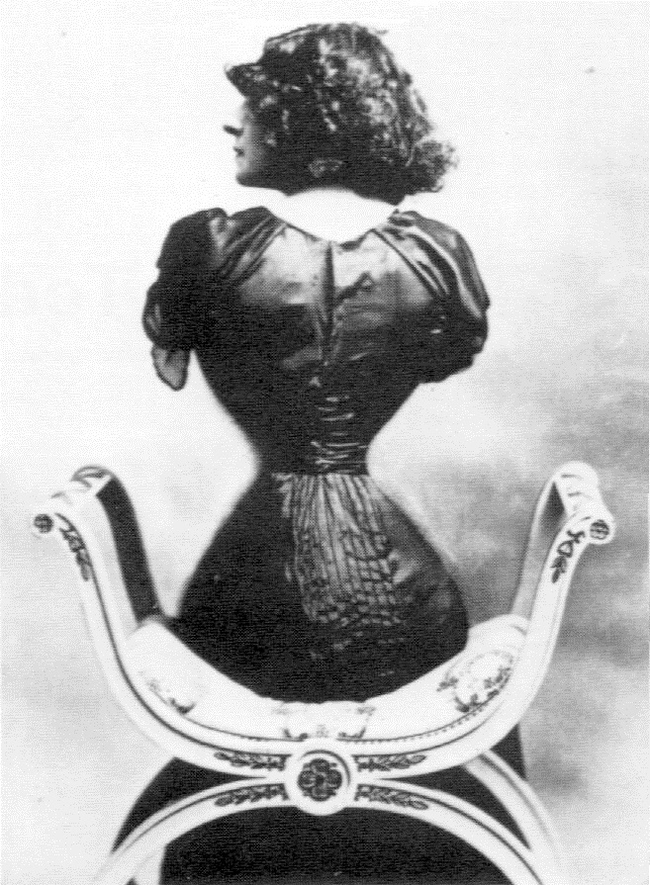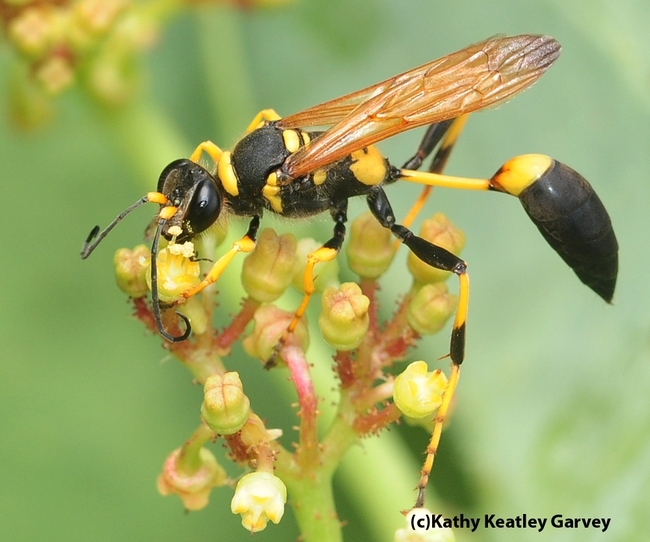"Around 250 million years ago, at the start of the Triassic period, a species of insect evolved to have a narrow waist, called a petiole. This adaptation allowed greater flexibility and maneuverability of the ovipositor, the tubular structure on the female's rear used to deposit eggs."--Hazel Russman London, UK, New Scientist
With all the emphasis on New Year's resolutions and the "growing" desire of many folks to lose weight, consider the waist of the mud dauber wasp, Sceliphron caementarium.
The petiole is about twice as long as the rest of the abdomen, according to BugGuide.net.
In the 19th and 20th centuries, some "fashionable" women wore corsets and girdles to try to achieve the "wasp waist," sometimes as small as 15 to 18 inches in circumference. Can you imagine that?
The French singer and actress, Émilie Marie Bouchaud (1874-1939), better known as Polaire, drew fame for her 16-inch corseted wasp waist.
Polaire, meaning "Pole Star," worked first as a music-hall singer and dancer, according to Wikipedia. One of her earliest hits: performing the French version of the vaudeville song, Ta-ra-ra Boom-de-ay.
A wasp waist can result in severe medical issues. As Wikipedia points out: "Among the multitude of medical problems women suffered to achieve these drastic measurements were deformed ribs, weakened abdominal muscles, deformed and dislocated internal organs, and respiratory ailments. Displacement and disfigurement of the reproductive organs greatly increased the risk of miscarriage and maternal death."
Polaire, though, apparently didn't die from the adverse effects of the tightlacing.
"Polaire's finances suffered from a series of actions by the French tax authorities and she struggled to find stage or screen roles as she aged," Wikipedia tells us. "She may have suffered from depression. She died in 14 October 1939, aged 65, in Champigny-sur-Marne, Val-de-Marne, France."
Wasp waists? Hourglass figures? Entomologists probably just shake their heads in disbelief.
Leave the wasp waists to the wasps.
Attached Images:

